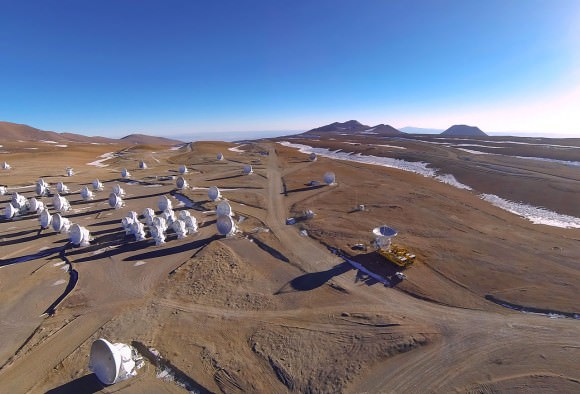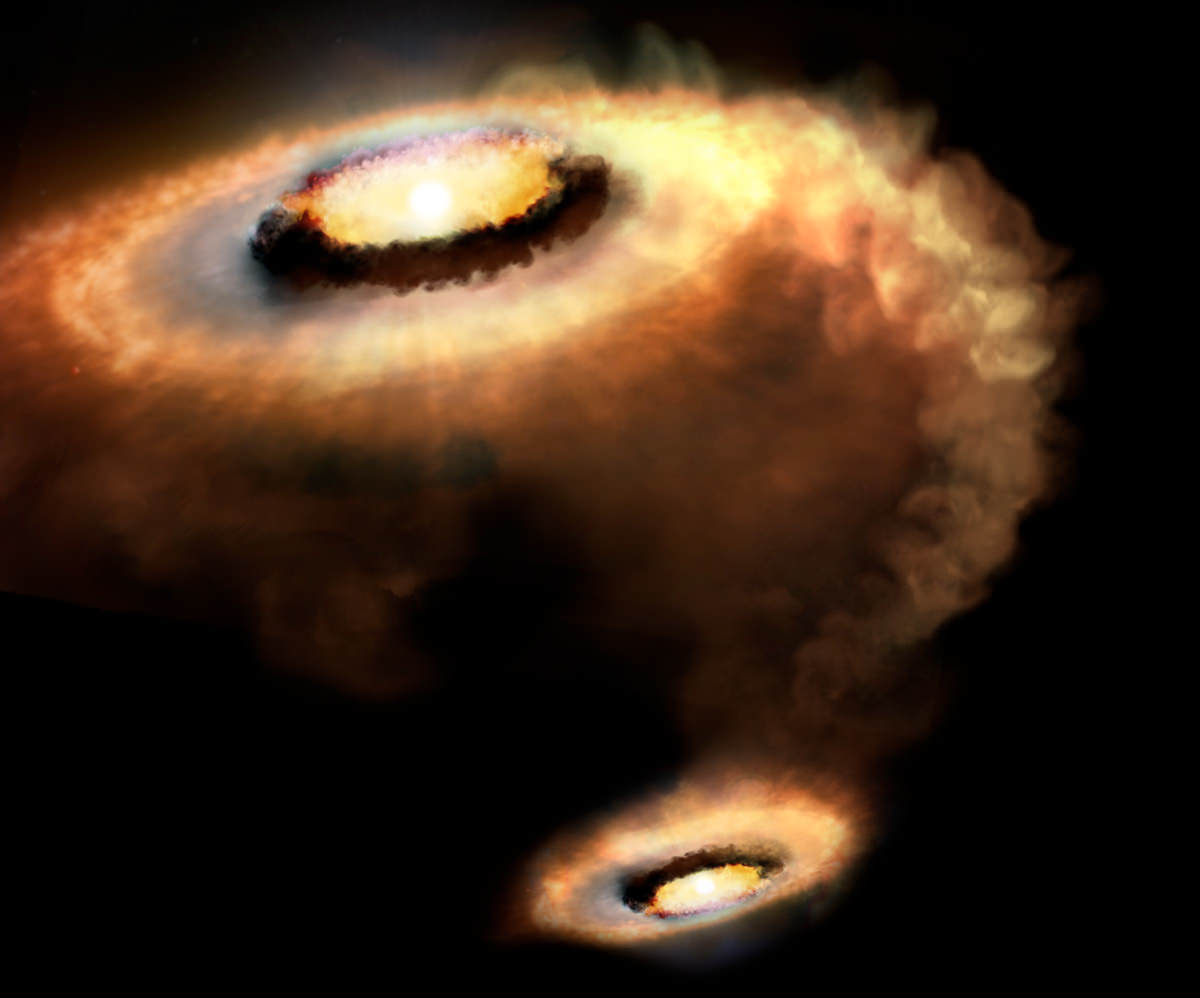Watch out! Carbon monoxide gas is likely fleeing the disk of a young star like our Sun, producing an unusual signature in infrared. This could be the first time winds have been confirmed in association with a T Tauri star, or something else might be going on.
Because the observed signature of the star (called AS 205 N) didn’t meet what models of similar stars predicted, astronomers say it’s possible it’s not winds after all, but a companion tugging away at the gas.
“The material in the disk of a T Tauri star usually, but not always, emits infrared radiation with a predictable energy distribution,” stated Colette Salyk, an astronomer with the National Optical Astronomical Observatory who led the research. “Some T Tauri stars, however, like to act up by emitting infrared radiation in unexpected ways.”

T Tauri stars are still young enough to be surrounded by dust and gas that could eventually form planets. Winds in the vicinity, however, could make it difficult for enough gas to stick around to form Jupiter-sized gas giants — or could change where planets are formed altogether.
While it’s still unclear what’s going on in AS 205 N, the astronomers plan to follow up their work with observing other T Tauri stars. Maybe with more observations, they reason, they can better understand what these signatures are telling us.
The weird environment was spotted by astronomers using the Atacama Large Millimeter/submillimeter Array (ALMA), a set of 66 radio telescopes in Chile. A paper based on the research was published in the Astrophysical Journal and is also available in preprint version on Arxiv.

